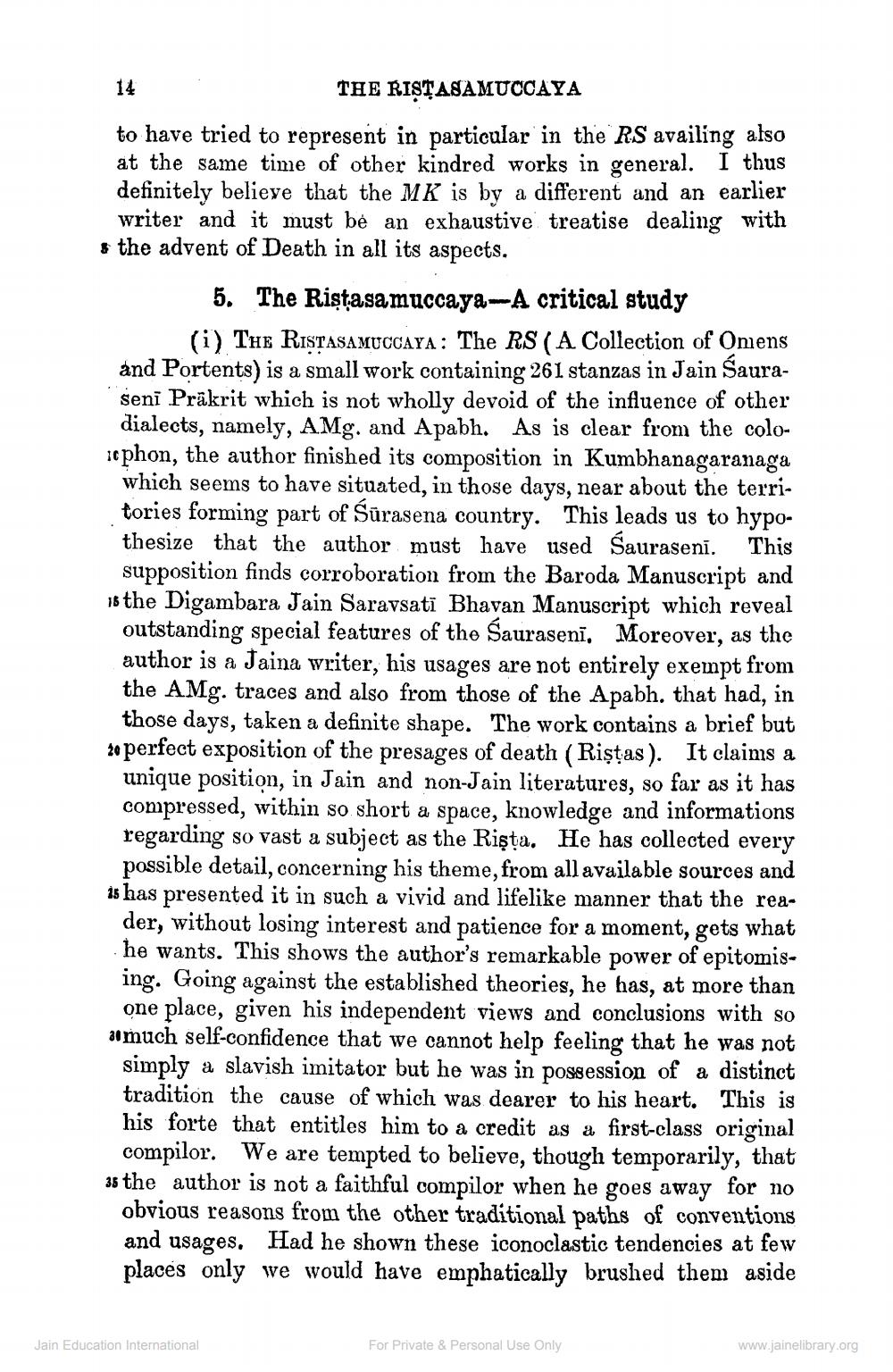________________
14
THE RISIASAMUCCAYA to have tried to represent in particular in the RS availing also at the same time of other kindred works in general. I thus definitely believe that the MK is by a different and an earlier writer and it must be an exhaustive treatise dealing with & the advent of Death in all its aspects.
5. The Ristasa muccaya-A critical study
(i) THE RISTASAMUCCAYA: The RS (A Collection of Omens and Portents) is a small work containing 261 stanzas in Jain Sauraseni Präkrit which is not wholly devoid of the influence of other dialects, namely, AMg. and Apabh. As is clear from the colosophon, the author finished its composition in Kumbhanagaranaga
which seems to have situated, in those days, near about the territories forming part of Sūrasena country. This leads us to hypothesize that the author must have used Sauraseni. This supposition finds corroboration from the Baroda Manuscript and is the Digambara Jain Saravsati Bhavan Manuscript which reveal outstanding special features of the Saurasenī. Moreover, as the author is a Jaina writer, his usages are not entirely exempt from the AMg. traces and also from those of the Apabh. that had, in those days, taken a definite shape. The work contains a brief but ze perfect exposition of the presages of death (Ristas). It claims a unique position, in Jain and non-Jain literatures, so far as it has compressed, within so short a space, knowledge and informations regarding so vast a subject as the Rişta. He has collected every possible detail, concerning his theme, from all available sources and is has presented it in such a vivid and lifelike manner that the reader, without losing interest and patience for a moment, gets what he wants. This shows the author's remarkable power of epitomising. Going against the established theories, he has, at more than one place, given his independent views and conclusions with so asmuch self-confidence that we cannot help feeling that he was not
simply a slavish imitator but he was in possession of a distinct tradition the cause of which was dearer to his heart. This is his forte that entitles him to a credit as a first-class original
compilor. We are tempted to believe, though temporarily, that 35 the author is not a faithful compilor when he goes away for no obvious reasons from the other traditional paths of conventions and usages. Had he shown these iconoclastic tendencies at few places only we would have emphatically brushed them aside
Jain Education International
For Private & Personal Use Only
www.jainelibrary.org




